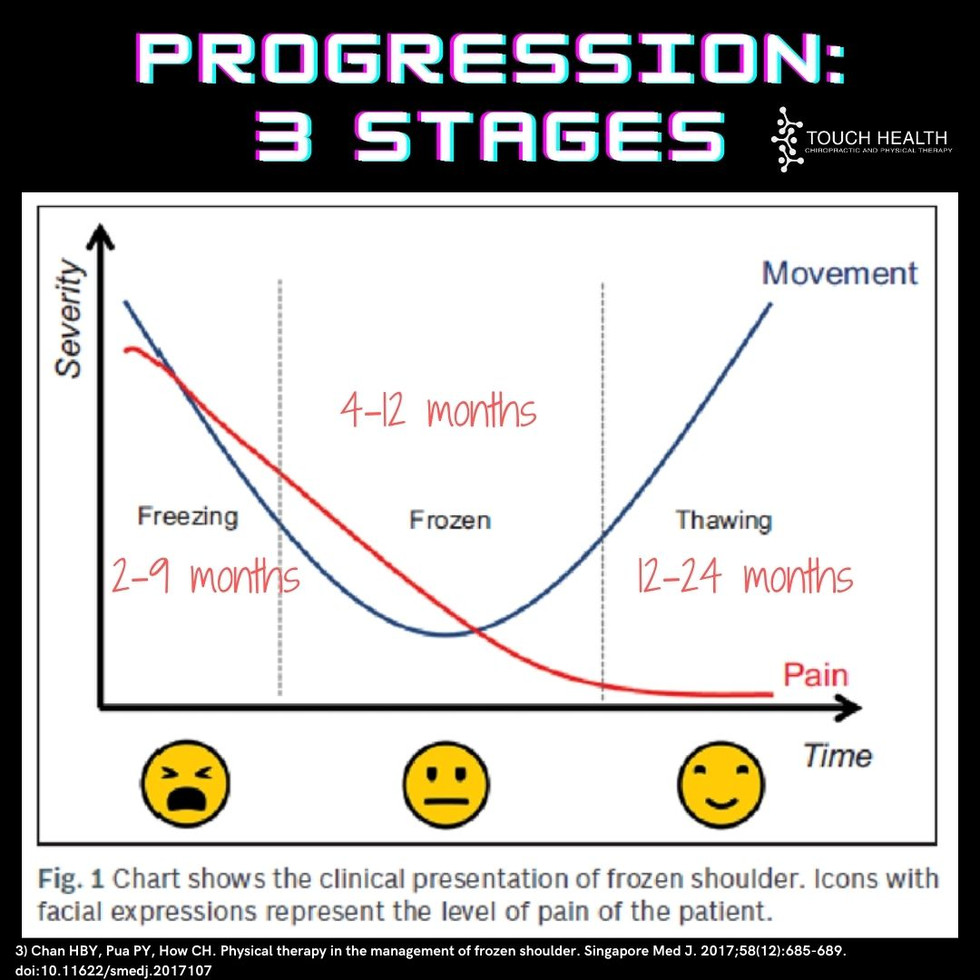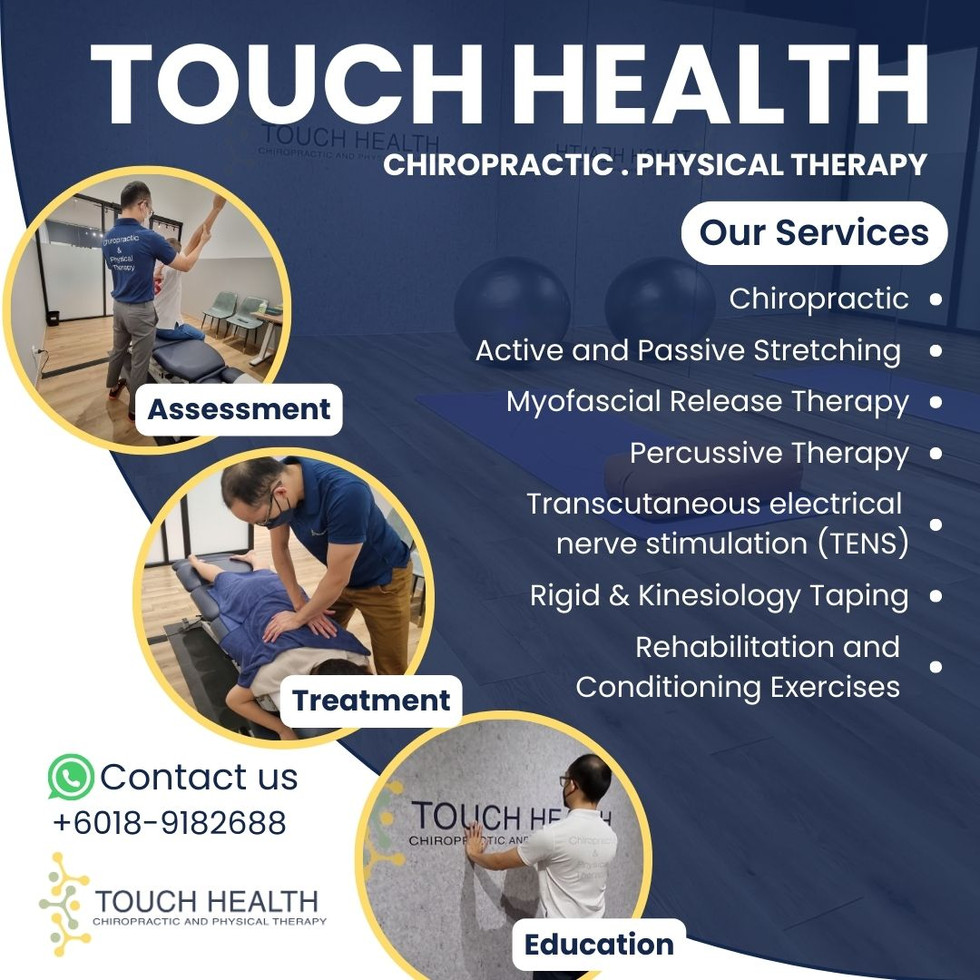Frozen Shoulder: Adhesive Capsulitis
- Han Wei CHOW
- Feb 16, 2024
- 2 min read
Informative post: Adhesive Capsulitis a.k.a Frozen Shoulder
#adhesivecapsulitis is a condition characterized by gradual development of pain and stiffness in the shoulder joint, resulting in loss of both active (movement by own) and passive (movement by practitioner) range of motion, especially external rotation (arm turning outwards) (1-11).
It can be classified into primary – spontaneous development with no known causes, often on non-dominant arm, or secondary (1,3,4,6,7,10) – development following other conditions, eg diabetes (as high as 20% prevalence) (3,6,8,9,11_, thyroid dysfunction (3,4,5,6,8,9,11), stroke (4,5,6,9), heart pathologies (4,5,6,9) , previous episode/s of repetitive strain injury, fracture or trauma in the shoulder (3-11), post-surgery (rotator cuff reconstruction, mastectomy) (4,8,10,11,12), prolonged immobilization (3-11) as well as Cervical spine degeneration (8,10).
Generally classified into 3 stages (1,2,3,10,11):
a) Freezing/Painful – Development of diffuse and disabling shoulder pain that is initially worse at night but then progresses to pain at rest. Associated with increasing stiffness. Can last from 2 to 9 months.
b) Frozen/Stiff – Adhesive phase characterized by progressive limitation in ROM in all ranges, but with the pain gradually becoming less pronounced. Can last from 4 to 12 months.
c) Thawing – Recovery phase where there is gradual return of ROM. May take 12 to 24 months for complete resolution.
Often a self-limiting condition that resolves within 1 to 3 years (1,3,6) although research have shown better outcomes for manual therapy in terms of pain relief and improved ROM compared with no treatment (1,2,3,10,11). Some patients do not get complete resolution though (some form of stiffness/pain remains).
IMPORTANT to note that not every painful/stiff shoulder is a frozen shoulder, other causes must be excluded before diagnosis (diagnosis of exclusion)3,6.
How can we help?
1) Some secondary causes of Frozen Shoulder could be addressed by chiropractic treatment and education on preventative home care (stretching, exercises) e.g. R.S.I, prolonged immobilization, Cervical spine degeneration management.
2) Research also indicated patients should avoid forward shoulder posture (hunched posture) as it further worsens shoulder joint ROM(3). Chiropractic treatments are great at helping with that.
3) Treatments during Freezing stage could help with pain management as well as ROM improvement.
4) Treatment during the Frozen and Thawing stage aims to further improve shoulder ROM and function by gradually breaking down scar tissues formed as well as strengthening weakened muscles after months of pain and immobility.
5) Across all stages it is beneficial to have a mobile and aligned spine/body to prevent compensatory effects on the body due to the condition.
------------------------------------------------------------------------------------------------
Connect with us:
S-02-23A Emporis Persiaran Surian Seksyen 3 Taman Sains Selangor, Kota Damansara, 47810 Petaling Jaya, Selangor
Waze: [https://bit.ly/3J81Avn]
Whatsapp: [https://wa.me/message/FUAFLF2XMHRWL1 ]
Website: [https://www.mytouchhealth.com ]
Tiktok: [https://www.tiktok.com/@mytouchhealth]
#shoulderpain #rotatorcuff #frozenshoulder #shoulderpainrelief #shoulderpaintreatment #badminton #volleyball #swimming #golf #basketball #football #chiropractic #kotadamansara #petalingjaya #kualalumpur #五十肩 #肩周炎 #spine #posture #肩膀酸痛


















